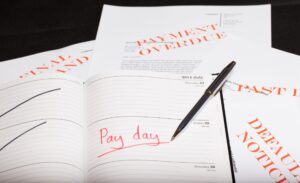Millennials face unique financial challenges that can make achieving independence difficult. Rising living costs, student debt, and an uncertain job market have all contributed to this generation’s extended stay in their parents’ homes. However, there are practical strategies millennials can use to gain financial independence and move out. Here are 12 effective ways to break free.
1. Create a Budget and Stick to It
Developing a budget is crucial for financial independence. Track your income and expenses to understand where your money goes. Identify areas where you can cut back and allocate more funds towards savings. Consistently sticking to a budget helps build financial discipline and allows you to save for future expenses like rent and utilities.
2. Increase Your Income Streams
Relying on a single source of income can be risky. Explore additional income opportunities such as freelancing, part-time jobs, or side hustles. Diversifying your income streams can provide a financial cushion and accelerate your savings. Utilize skills and hobbies to generate extra income, making it easier to afford independent living.
3. Pay Off Debt Aggressively
Debt can significantly hinder your ability to move out. Prioritize paying off high-interest debt such as credit cards and personal loans. Consider using the snowball or avalanche method to tackle your debts efficiently. Reducing your debt burden frees up more of your income for savings and living expenses, making it easier to achieve independence.
4. Build an Emergency Fund
An emergency fund acts as a financial safety net, covering unexpected expenses without derailing your budget. Aim to save at least three of living expenses, with six months being the next goal. Having a robust emergency fund provides significant peace of mind and ensures you won’t have to rely on credit or family in times of financial crisis.
5. Improve Your Credit Score
A good credit score is essential for securing housing and loans at favorable rates. Regularly check your credit report for errors and pay your bills on time. Reduce your credit card balances and avoid opening unnecessary new accounts. A strong credit score opens doors to better financial opportunities, including renting your own place.
6. Share Living Expenses with Roommates
Living alone can be expensive. Consider finding roommates to split rent, utilities, and other expenses. This arrangement can make living independently more affordable. Choose reliable and financially responsible roommates to ensure a smooth living situation. Sharing expenses allows you to save money while enjoying the benefits of independent living.
7. Look for Affordable Housing Options
Explore different housing options that fit your budget. Consider renting a smaller apartment, living in a less expensive neighborhood, or looking for housing with included utilities. Be open to compromises that make independent living more financially feasible. Affordable housing options can provide a stepping stone towards complete financial independence.
8. Enhance Your Skills and Education
Investing in your education and skills can lead to better job opportunities and higher income. Consider taking courses or certifications that are relevant to your career. Continuous learning enhances your employability and opens doors to promotions and salary increases. Higher income makes it easier to save for moving out and maintaining independence.
9. Network and Seek Career Advancement
Networking can significantly impact your career progression. Attend industry events, join professional associations, and connect with peers and mentors. Building a solid professional network can lead to job opportunities and career growth. Career advancement often comes with higher income, making financial independence more attainable.
10. Practice Minimalism
Adopting a minimalist lifestyle can reduce living expenses and help you save more. Focus on purchasing only what you need and avoid unnecessary spending. Declutter your living space and sell items you no longer use. Minimalism encourages mindful spending and can significantly boost your savings, paving the way for independent living.
11. Consider Remote Work Opportunities
Remote work can offer more flexibility and potentially higher savings. You can choose more affordable living arrangements without commuting expenses and the need to live near your workplace. Look for remote job opportunities that match your skills and career goals. Remote work can provide the financial flexibility needed to move out of your parents’ home.
12. Set Clear Financial Goals
Having clear financial goals provides direction and motivation. Set short-term and long-term goals, such as saving a specific amount for a security deposit or achieving a certain income level. Break down these goals into actionable steps and track your progress. Clear goals keep you focused and determined to achieve financial independence.
Millennials Don’t Have to Live with Their Parents Forever
Millennials face unique challenges, but with careful planning and disciplined financial habits, it is possible to gain independence and move out of your parents’ home. By implementing these 12 strategies, you can build a secure financial foundation and enjoy the freedom of independent living.
Read More:
8 Ways Life Was Tougher for Boomers Than Millennials and Gen Z
Millennials and Baby Boomers: 16 Misunderstandings Unraveled















































